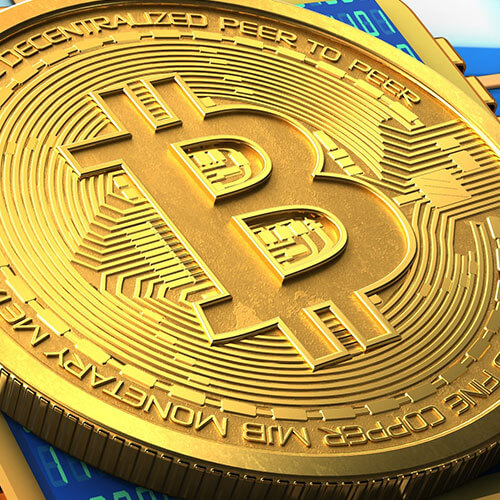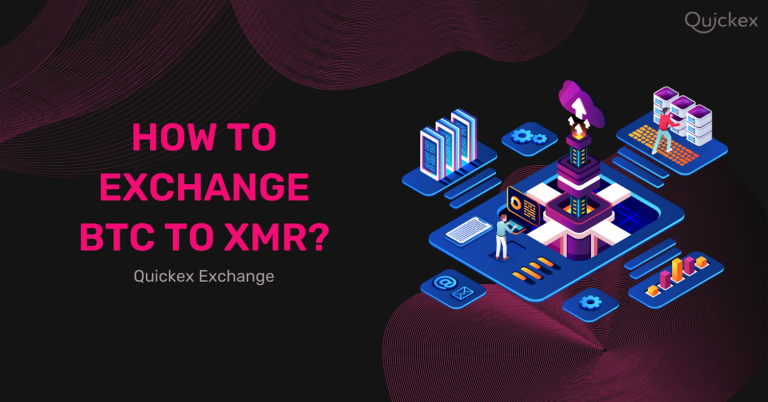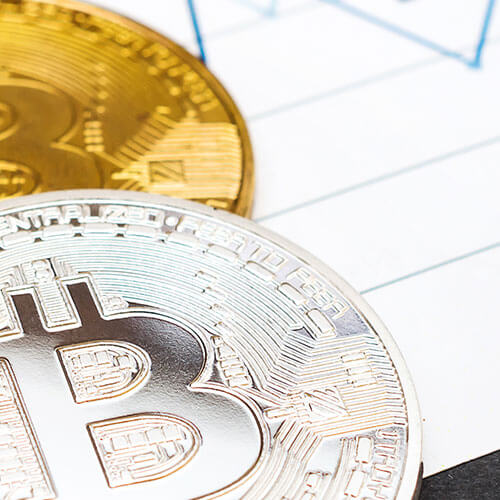How to Use Bitcoin Core to Mine?
Bitcoin (BTC) is often regarded as digital gold, because the Bitcoin price per coin is more than 50,000 USD, making it the most valuable cryptocurrency on the market. BTC was always the leader of the crypto market, with the highest market capitalization and value per coin, ever since its launch back in 2009.
These characteristics make Bitcoin a prime target for cryptocurrency mining because the promise of making loads of cash with the help of a mining rig computer is something that attracts thousands upon thousands of people all over the world. In the early days of BTC, users could even use their CPUs to mine some coins pretty efficiently, but the whole crypto mining scene has long since evolved into a very expensive business, where only highly advanced rigs can really be profitable. Rigs require specialized mining software to operate because you need to run a BTC network node in order to mine coins.
Bitcoin Core, the official BTC wallet client, which is used for creating Bitcoin network nodes and validating transactions, also has a built-in mining function. In this guide, we are going to take a detailed look at Bitcoin, how it works, how the mining works, the things you need to mine coins, the role of Bitcoin Core, and whether or not you can use it as a part of your mining operation.
Bitcoin History
To understand why Bitcoin has achieved such immense popularity and value, making it the main crypto mining target, we need to take a look at BTC history. Bitcoin was launched in 2009, by anonymous programmer Satoshi Nakamoto, less than a year after they published the Bitcoin white paper. The project was launched as the first type of decentralized, digital cash that works with the help of a fast, peer-to-peer network, the BTC blockchain.
At the time of its launch, BTC was the first cryptocurrency in the world and apart from the relatively small crypto community, there weren’t many people that thought Bitcoin had any bright future. In fact, traditional stockbrokers, financial industry executives, and government officials were quick to dismiss Bitcoin as a scam or unsustainable currency without any real value.
However, the popularity of BTC began to gradually rise over the years, thanks to the exceptional performance of the Bitcoin blockchain which made fast, cross-border payments between any two individuals in the world a reality. The fact that people could send funds to each other without utilizing slow and complicated banking systems that can take hours or even days to facilitate a wire transfer, was so revolutionary that Bitcoin started becoming more and more popular.
As the trading volume of BTC grew, so did its market cap and value per coin, which enticed stockbrokers into becoming crypto traders and including this new, digital currency in their portfolio of assets. In 2010, the first BTC exchanges were launched, which quickly evolved into crypto exchanges because huge numbers of developer teams started creating their own cryptocurrencies, known as altcoins, hoping to become as popular as BTC or even surpass it.
From a coin worth barely a few dollars, BTC has transformed into the leader of a crypto market that’s worth more than two trillion US dollars, with over 400 crypto exchange platforms and more than 10,000 altcoin projects according to Coinmarketcap.
The Bitcoin Blockchain
When someone mentions cryptocurrencies today, the first thing people think about is Bitcoin. Anyone who has heard about cryptos knows about BTC, but not everyone knows the details about the technology behind Bitcoin and how it actually works.
Bitcoin is built upon a blockchain network that enables users to facilitate transactions between any two digital locations in the world. There is no central authority or central server for the blockchain, which means no one can just shut down Bitcoin by pulling the plug or hacking a central server. Instead, there are thousands of network nodes that act as validators that process and approve transactions. Classic, centralized payment networks on the other hand need the approval of a central authority for every transaction and they are susceptible to cyberattacks that can paralyze their whole system.
The BTC blockchain is a decentralized public ledger of transactions, which means that anyone can view all of the transactions on the network with the help of a blockchain explorer such as Blockchain.com. This is a great feature because users can track their transactions through the blockchain and make sure they arrived at their destination address instead of being stuck at the verification process.
Bitcoins can’t leave the blockchain, they just change blockchain addresses, which are also called wallet addresses. When you store some BTC in your crypto wallet, you’re actually storing the private keys that act as proof that a certain amount of BTC is actually yours.
The blockchain has the form of a chronological, linear string of 1MB data blocks that are set from first to last. Each block contains transaction data and the data which is located in a block can’t be altered once all transactions within that block are approved. This cryptographic feature makes BTC tamper-proof, because no one can change the information in the approved blocks.
Bitcoin Transactions
Bitcoin transactions are the most common daily operation for BTC traders and holders because if you want to send a Bitcoin payment, transfer funds from one wallet to another one or to an exchange platform account, you need to initiate a BTC transaction.
Transactions are digital, encrypted messages that contain information about the sender address, receiver address, and the amount of sent funds. You don’t send actual funds, but rather an encrypted message that relieves you of control over a certain amount of BTC and grants the control over those funds to another user.
Each transaction has its unique transaction ID (TXID) and must be verified by network nodes before it can be processed to its final destination. The verification process is necessary to prevent scams such as double-spending attempts where an individual tries to spend the same coins twice. With fiat money, you can’t try something like this because if you pay for some goods in a store with a 100 USD bill, you can’t spend that same bill twice. With cryptocurrencies, the situation is more complex, because BTC doesn’t exist physically and a malicious individual might try to take advantage of that fact and initiate multiple transactions with the same funds.
For this reason, it is necessary to check and approve each transaction on the blockchain. The transaction approval mechanism is one of the main selling points of the BTC blockchain, which inspired numerous altcoin developer teams. The concept is rather simple, when a transaction is initiated it needs to go through a cryptographic procedure where network nodes need to find an appropriate 64-digit transaction hash that proves the validity of that transfer. Only after the appropriate hash has been found, the transaction can get approved.
Bitcoin Mining
Bitcoin mining is often mentioned in the media as a very profitable business, which is quite true if you manage to set your mining operation appropriately, but the process behind BTC mining is often obscured in media reports. BTC mining is a key part of the Bitcoin ecosystem and it is vital to both the creation of new bitcoins and to the transaction validation process.
The network nodes that approve transactions are actually miners with their powerful mining computers, rigs that use their computing power to validate transactions. A 64-digit transaction hash is a very complex number and requires a lot of computing power to find the corresponding hash for a transaction. This can only be accomplished by trial and error, which means that a rig needs to try out an enormous amount of combinations before finding the right one. When the right combination is finally found, the miner sends out the combination to the rest of the BTC network as a proof-of-work that proves a certain transaction is legit.
The proof-of-work algorithm requires multiple independent miners to verify the transaction hash, which is why a BTC transaction requires several confirmations before it is approved. After the transaction is approved, it gets added to the new blockchain block, which can contain a maximum of 1MB of transaction data. This doesn’t mean that a single block can only house one transaction because there can be multiple transfers depending on the amount of data they require.
Once the new block gets filled with approved transfers, the block is officially created and added to the rest of the blockchain. This is when a block award is generated by the blockchain in the form of freshly mined bitcoins, which are distributed to the miners that contributed to the creation of the new block. These block rewards, along with the transaction fees that are added to each transfer are the key incentives for miners to validate transactions and this is how new BTC is mined.
Bitcoin Full Nodes
During the process of validating transactions and processing them through the blockchain, miners play the role of Bitcoin nodes. In order for a miner to fully set up their BTC mining operation and be able to validate transfers, they need to set up a Bitcoin full node. You can of course set up a network node that only partially validates blocks and transfers, but you’ll get far more productivity if you operate a full node that can fully validate transactions on the blockchain.
Essentially, a full node is a type of specialized software program that needs to be installed on a computer before it can participate in the maintenance of the BTC blockchain by accepting and verifying transactions. A full node actively checks transfers and new data blocks, while also sending them out to other full nodes that act as secondary confirmation points.
CPU Mining
During the first couple of years after the launch of BTC, you could efficiently mine bitcoins with your PC or laptop computer, using the computing power of your central processing unit (CPU). A CPU could grant moderate BTC mining awards and a lot of early crypto enthusiasts mined Bitcoin this way.
However, it was soon discovered that graphics processing units (GPUs) could mine BTC far more efficiently because they could try out a much higher number of hash combinations than a CPU. The evolution of Bitcoin mining difficulty also played an important role in this transaction to GPU mining, because BTC has a hard cap of 21 million coins that can be mined, while the mining difficulty doubles every four years of 210,000 blockchain blocks. This is done by an automatic halving of the block rewards every four years and CPUs have quickly lost a competitive edge when it comes to Bitcoin mining.
You can still mine Bitcoin with your CPU today, but it isn’t nearly as profitable as mining it with a GPU or ASIC miner machine. If you want to use your CPU to gain a bit of passive income while your computer isn’t active, then it’s fine to engage in some CPU mining, but if you want to make some serious cash, then mining with a mining rig is far better.
GPU mining is the most popular method for mining Bitcoin because graphics cards can achieve some seriously high hash rates, drastically shortening the time it takes to find an appropriate 64-digit transaction hash compared to a CPU mining operation. Not all GPUs however have the same or even similar hash rates. In fact, to efficiently mine BTC, you need some of the best Nvidia or AMD GPUs that are usually used for gaming as the most demanding activity when it comes to graphics processing and computer memory capacity.
A top quality GPU for mining can cost quite a lot, especially if you take into account the fact that you need at least two strong GPUs to create an efficient rig. Also, when considering which GPU to buy for BTC mining, it’s important to look at available user experience testimonials and websites that analyze the hash rates of various popular GPUs. Whattomine.com is a great web destination to find out how good certain graphics cards are for mining cryptos, what their hash rates are, the power consumption and the amount of money you can make from using them to mine BTC.
Cryptocurrency Mining Rigs
If you decide to start your own GPU mining operation, you need to buy or build a mining rig. Mining rigs are essentially powerful computers with multiple GPUs and they are specifically manufactured for mining cryptocurrencies such as BTC. A mining rig is a serious investment, especially if you want to include some of the best hardware components available on the market. You’ll need to invest at least a couple of thousand USD, while the upper limit for a mining rig can be several tens of thousands of USD since a rig can include anywhere between two and eight GPUs. Imagine buying 8 of the strongest available GPUs on the market, it’s quite a lot of money, isn’t it?
Besides the GPUs, you’ll also need a CPU and motherboards that are capable of handling all that processing power. Multiple GPUs consume much more electricity than a standard PC, so you need to be careful and install adequate hardware that will handle the huge amount of power. This is an additional ongoing expense because you’ll need to pay the electricity bill each month and the bill can be seriously high when you’re operating a strong mining rig.
When putting together a rig, you also need to install a cooling system in the rig frame, to sufficiently cool all the GPUs, because if a rig doesn’t have a good cooling system, your GPUs will quickly start malfunctioning and they can even start literally burning as a result of the excess heat from being turned on 24/7.
Some miners use custom-built aluminum frames to house their rigs, while others just connect their GPUs and other rig components without a frame, but make sure to have a cooling system that maintains an optimal room temperature.
ASIC Miners
The most advanced type of mining computer is ASIC (Application Specific Integrated Circuits) miners, which aren’t really computers. It’s much more adequate to classify ASICs as specialized crypto mining machines that are built only for the purpose of mining a single cryptocurrency. The name Application Specific Integrated Circuits means that the machine has a single purpose and that the software which is built into the machine has a specific goal, which can’t be modified by users.
ASIC miners are very expensive, but they are also far more efficient than any GPU mining rig. Most Bitcoin miners can’t afford to buy an ASIC so they choose to mine with a rig and a part of the crypto mining community has a strong opinion that ASIC miners aren’t fair, because they are so much stronger than rigs, while they are very expensive and tend to push out conventional miners by snatching the block rewards before them.
Some of the most popular ASIC machines on the market include the Antminer S19, Whatsminer M30S and the Bitmain Antminer S7.
Mining Pools
When a BTC transaction gets approved, added to a new block and that block gets added to the rest of the chain, the block reward of freshly mined Bitcoin goes to the miner that validates the transactions within the data block. Because of the fact that finding the right 64-digit transaction hash takes a lot of time and computing power, mining pools were invented, where thousands of miners join their hash rates and share block rewards between pool members according to the hashing power each of them provides.
This way, block rewards are much more frequent than in the case of a single miner who independently mines BTC. A solo miner might actually wait for a long time before they manage to receive a block reward and this is why it’s much smarter to join a mining pool and split the block reward with other miners.
Cloud Mining
In case you don’t want to invest cash in buying or building a mining rig or ASIC miner, another great option is cloud mining. Cloud mining services are run by companies that own large amounts of mining rigs and/or ASIC miners and they are willing to rent those mining machines to users that wish to buy some hashing power and earn Bitcoin, Ethereum (ETH), Litecoin (LTC) or other mineable cryptos.
The mining operations of these companies are usually located in large warehouses with hundreds of connected rigs that produce high amounts of cryptos. Popular cloud mining platforms include Trust Mining and Shamining.
You can also use hashing power brokerage platforms such as NiceHash, which doesn’t have its own mining operation but connects people who are interested in buying or selling hashing power. This means you can buy some hashing power from mining rigs of other users and watch bitcoins flow into your crypto wallet.
Bitcoin Core
Bitcoin Core is an essential part of BTC technology. It’s an open-source, free to use Bitcoin client and the official Bitcoin wallet downloadable at Bitcoin.org. Bitcoin Core is the necessary software to run a full BTC network node and a key component for Bitcoin mining that allows users to validate transactions and blocks on the network. Bitcoin Core is based on the original BTC code built by Satoshi Nakamoto back in 2008. The software was then just called Bitcoin; the new developers changed the name to Bitcoin-Qt in 2011. The current name, Bitcoin Core, has been the official name since 2014.
When BTC was launched, Satoshi Nakamoto was the developer responsible for maintaining Bitcoin Core and updating the programming code until 2010. A great thing about Bitcoin Core is that it has always been subject to community criticism and development suggestions. The BTC blockchain runs on thousands of network nodes and those nodes need to utilize the Bitcoin Core code to operate, validate and process transactions. The network is fully decentralized and node operators can always suggest updates and changes to the Bitcoin Core code.
Anyone can view the Bitcoin Core code on Github and suggest changes, but not all changes are accepted of course. Since Satoshi Nakamoto disappeared from the crypto scene in 2010, various crypto enthusiasts and developers fulfilled the role of Bitcoin Core maintainers. The role of a Bitcoin Core maintainer isn’t a position of authority and the person that takes care of the code can’t really influence any changes. Plus, if they lose the trust of the community, they will be replaced by another maintainer.
For a code update of Bitcoin Core to get accepted, it first needs to go through extensive discussions and peer reviews and a change is only accepted if consensus is achieved regarding the update. Once the community agrees that the Bitcoin Core code needs to be altered, the developers that play the role of maintainers are the ones who implement the changes in the code.
Bitcoin Core Key Features
Bitcoin Core is the key software for all BTC enthusiasts that really want to contribute to the smooth functioning of the blockchain. It’s one of the best wallets for creating a Bitcoin address because it is supported by the developer teams that maintain the BTC code.
However, the main use of Bitcoin Core is to run a full node of the BTC network. You need to download the software and install it on your computer, but you need to be aware that this will require around 350 GB of hard drive space because you need to download a copy of the whole Bitcoin blockchain.
This is the only way to run a full BTC node and gain full access to the possibility of verifying transfers and blocks. So essentially, all miners need to run network nodes, which means they need to use Bitcoin Core and have a copy of the whole blockchain on their computers. However, not all nodes need to be miners, because there are crypto enthusiasts that just want to contribute to the reliability of the BTC blockchain and choose to run full nodes but don’t mine BTC, because they don’t want to deal with all the hassle of maintaining a mining operation.
You can’t run Bitcoin Core on your phone or tablet device, as you need to install it on a computer, but since it requires so much disk space, crypto enthusiasts usually decide to run Bitcoin Core on an external hard drive that’s connected to their mining rig, as most full node operators are also miners. The Bitcoin community made Bitcoin Core compatible with Windows and Mac OS, but given the fact that different types of Linux operating systems are quite popular among programmers and crypto holders, the software is also compatible with Linux TGZ, ARM Linux and Linux Snap Store.
Bitcoin Core Wallet
As the most popular cryptocurrency on the market, there are thousands of crypto wallets that are compatible with Bitcoin. You can choose between numerous very reliable software wallets, accessible through your mobile phones, such as the Atomic Wallet, Trust Wallet or hardware wallet devices like Trezor and the Ledger Nano S and Nano X. However, Bitcoin Core is regarded by many hardcore Bitcoin enthusiasts as the best option for storing your BTC.
In order to use the Bitcoin Core wallet, you’ll still need to download and install Bitcoin Core and the whole BTC blockchain, but you don’t need to set up a full node if you don’t want to participate in the process of validating blockchain transactions. This means that you need to go through the 350 GB download and installation process which can take quite some time even if you have a pretty strong computer. Honestly, if you don’t want to engage in BTC mining or running a full node, then this wallet isn’t for you. It’s much faster to just download a reliable wallet app or store your BTC in a hardware wallet if you want to store a lot of coins.
If you do plan to mine Bitcoin, then Bitcoin Core really is a perfect choice for your needs, because you can automatically store the freshly mined BTC from block rewards and transaction fees in your Bitcoin Core wallet. Don’t forget however that this wallet is only compatible with BTC and you won’t be able to store other cryptos in it, so if you plan to convert your BTC into other cryptos or to cash out into fiat money, you should also have another reliable multicurrency wallet or an account on a trusted exchange like Coinbase or Binance.
When you create a Bitcoin Core wallet, you can encrypt the wallet through the software interface, choose a strong password and the wallet will automatically shut down. The next time you launch Bitcoin Core, your password will be required to access it and you can start sending and receiving Bitcoin.
Security
The security of Bitcoin Core is very high, whether you’re using it as a wallet, full node BTC client or gateway for mining. The fact that Bitcoin Core requires users to download a copy of the whole blockchain means that you have a personal copy of all the transaction data that was ever processed through the chain. Your Bitcoin Core software automatically scans the blockchain for transactions that are directed to your BTC address.
When it comes to sending coins, the transactions you initiate are processed through an extensive peer-to-peer network of system nodes and it’s considerably harder to track than a transfer sent through a lightweight client. This added privacy is a great advantage of Bitcoin Core.
Using Bitcoin Core for facilitating transactions doesn’t require any central authority to scan the network for system nodes that are available for a connection. Instead, the software runs on decentralized peer-to-peer networking, which means that the software automatically discovers new peers available for facilitating transactions, through an autonomous decentralized process. Many centralized wallets, for example, rely on their central server to find available network nodes when a user wants to facilitate a transfer of coins. The software doesn’t come with a complicated user interface, and it’s quite intuitive even for beginners because there’s a simple graphical user interface (GUI).
It’s also worth mentioning that Bitcoin Core is fully compatible with the TOR anonymous browser that obscures your IP address, which is a great feature for users who want to make their BTC blockchain activity untraceable.
Fees
Downloading and installing Bitcoin Core is totally free, you won’t be charged anything. Additionally, when you set up your BTC blockchain node to validate transactions, you will get awarded with transaction fees. Each transaction has an included transfer fee which goes to the miner that selected that transaction from the mempool in order to validate it.
The whole amount of the transaction fee is yours and Bitcoin Core won’t charge you any percentage. This is because Bitcoin Core doesn’t belong to any centralized corporate entity that profits from the transactions, because the whole network is decentralized and the only entities that do profit from transaction fees are the miners because they use their computing power to operate the blockchain.
The only fees you’ll incur when using Bitcoin Core is when you transfer coins to and from your wallet because that’s a classic BTC transaction that needs to go through the blockchain and other miners need to approve your transfer. You can’t validate and approve your own transaction, because that would enable malicious individuals to run full nodes in order to approve double-spending transfers. That’s why your own transfers are always checked by independent, third-party miners and not by your own network node, even though you have one at your disposal.
Bitcoin Core Technical Requirements
Bitcoin Core has multiple technical requirements that need to be fulfilled in order for the software to work properly. Using Bitcoin Core isn’t like installing an ordinary app that takes a couple of minutes. To start, you need to have 350 GB of hard drive space to download and install the software. As mentioned earlier, Bitcoin Core requires users to download their own copy of the whole BTC blockchain.
Not only do you need a lot of disk space, but you also need to have a powerful computer that can keep up with the high speed of the BTC blockchain and act as a network node at least 6 hours a day. If you try to install Bitcoin Core and run a BTC node on a weak computer you’ll have a bunch of technical issues or you might not even succeed in running a network node.
The 350 GB of hard drive space necessary for Bitcoin Core needs to be accessible at all times at a read/write speed that’s no less than 100 MB/S. Your computer needs to have at least 2 GB of RAM, but it’s generally advised to have more like 8GB in order to be able to really run the network node smoothly because you’ll want to use your PC for other things apart from running a BTC node. If you’re low on RAM, anything you do will be glitchy and slow on your PC.
To run Bitcoin Core you need a broadband internet connection with an upload speed of at least 50 Kb/s, but the higher the better. Your internet connection needs to be smooth and with high upload limits, or without any upload limits, because running a BTC node can require an upload of 200 GB or even more data per month. Monthly data downloads are usually around 20 GB.
While 6 hours is the bare daily minimum for running a full node, it would be best if you can run the node 24/7. In order to do this, you need to have a highly efficient cooling system to make sure your computer doesn’t get overheated.
Common Issues
Bitcoin Core is a fantastic piece of crypto software thanks to the dedicated developer and Bitcoin Core code maintainers that have put in a lot of work throughout the years to regularly update and improve the code. However, running Bitcoin Core and operating a full node might cause some issues.
The first possible problem is the legal regulation regarding cryptocurrencies such as Bitcoin in your region. Bitcoin is only recognized in a couple of global regions as a legal currency. In most parts of the world, the use of BTC is legal but it isn’t considered as a currency of the same level of importance as fiat money. Some regions, however, such as China, fully prohibit the use of BTC, while other regions impose some prohibitions on Bitcoin mining and transactions. Before installing Bitcoin Core and running a network node, it’s best to check out the legal regulations regarding BTC in your country.
It isn’t uncommon that internet payment plans have bandwidth limitations or that they charge additional fees for extremely high upload and download volumes. Some internet service providers might even just pull the plug on your connection because of extremely high data usage. Bitcoin Core is known to require a lot of data exchange that might bring you into an unpleasant situation with your internet provider. You should check in advance the data usage limitations of your internet plan and prevent Bitcoin Core from using too much data.
Another common issue with Bitcoin Core is related to the fact that numerous malicious individuals have placed different computer virus codes within the BTC blockchain. The data blocks which contain viruses can’t actually infect your computer, because a block can’t be altered once it is approved, which means no data can get in or out of the block. However, anti-virus programs are known to sometimes detect these viruses and try to quarantine your Bitcoin Core files. You need to manually approve the quarantined data and label it as files that don’t pose any danger to your computer.
Beware of Cyber Attackers
When operating a Bitcoin full node, the biggest risk for the security of your node and mining operation are cyber attackers. The fact that you’re running a full node on the BTC network is very attractive to potential hackers who might try to take control of your node. The only way bitcoins could get stolen by hackers is if they conduct a successful 51% attack, which means that the attacker needs to take control over 51% of Bitcoin nodes in order to alter the data of previous blocks, enabling them to steal funds. Such an attack requires a lot of effort and it has never happened successfully with the Bitcoin blockchain, but numerous smaller cryptos did experience such attacks.
Another reason why cyber attackers may target Bitcoin Core full node operators is to slow down the Bitcoin network by considerably slowing your internet connection and decreasing your bandwidth limit, in order to disrupt the blockchain’s processing speed.
Mining With Bitcoin Core
Apart from being an essential software for running full nodes of the BTC network, which is a prerequisite for mining Bitcoin, Bitcoin Core was also used for years as a simple CPU mining software. The program had a built-in CPU mining function that could easily be initiated by users in just a couple of clicks. During the years, however, as CPU mining became obsolete in terms of speed and efficiency, thanks to the ever-increasing BTC mining difficulty, the developer team behind Bitcoin Core decided to remove the CPU mining function from the software. The function was removed in 2016, so nowadays, it’s really a relic of the past.
A Few Final Words…
Bitcoin mining was always a profitable business, but today you can earn unprecedented amounts of cash by mining BTC if you carefully set up a mining operation whose profitability is much higher than the amount of money needed for the initial investment. BTC mining is also a very risky business because if you don’t calculate your potential profitability right, acquire some obsolete mining hardware, or experience a mining rig malfunction because of an inadequate cooling system, you can lose a lot of money.
Bitcoin Core is an integral part of the mining process because even though you can’t use the CPU mining feature of the program anymore, you still need to install the program to run a full node of the Bitcoin blockchain on your computer.
This guide has explained in full detail how the BTC blockchain works, what you need in order to set up a mining operation of your own and why Bitcoin Core is so important for the process.






